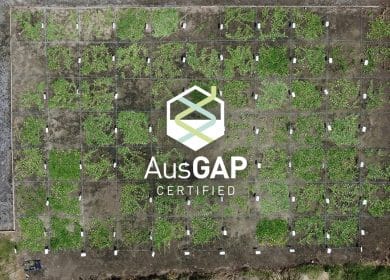Labour shortages in agriculture emphasising employee retention management

While the pandemic has certainly posed its own issues concerning labour shortages over its duration. It has also exacerbated labour issues already prevalent to the agriculture sector. Even prior to 2019, the ability of agricultural industries to attract people they need was a shared concern among most industrialised countries. This emphasises the need for agricultural workplaces to focus on employee retention in order to change the trajectory of their workforce.
In Australia, most farms are family farms. However, decline in total agricultural workforce over the last two decades has led to an increase in reliance on hired farm labour (Nettle et al., 2018). This is due to the weakening of the tradition of family succession on the farm (Santhanam-Martin et al., 2015).
Why is agriculture retention and recruitment in decline?
The current skill and labour shortage in agriculture is an accumulation of multiple factors. A major contributor is the ageing farm workforce in combination with low recruitment of young people into farm careers. This has been attributed to the changes in lifestyle expectations and career trajectories of young people as over time social expectations of work have shifted (Nettle et al., 2018). Additionally, the structure of agricultural businesses is changing as focus and growth in the ‘services’ workforce as expectations have changed of business transactions where consumers expect a custom experience.
What can be done about labour shortages in agriculture?
There needs to be a shift in paradigm about retention and recruitment for the agriculture sector including the turfgrass industry. For example, from ‘filing labour gaps’ to ‘offering better jobs and careers’ (ILO et al., 2014). Focusing on employee retention can drive the success of an organisation, while nearly 50% of turf management facilities are reporting labour impacts and an have reported having below the full-time staff required to operate efficiently (ASTMA et al., 2022).
An emphasis on training and career development, culture and communication will be a way for businesses ensure employment and retention rates reach where they need to be. Having an emphasis on training and development requires a change in thinking from making people fit the current farming systems to designing farm systems to suit people. Additionally, having an enjoyable culture is paramount to ensuring people want to be and remain part of the team, this is the same for communication as this can be a way for employees to set their expectations (ILO et al., 2014).
Ultimately, many workforces are facing issues with labour shortages. For the agriculture and turfgrass industry to see growth in these areas it is clear a change in mindset and approach is needed. Even small businesses relying on family succession can benefit from these tools and training ensuring better jobs and careers for generations to come.
References:
Nettle, R. 2015. More Than Workforce Shortages: How Farm Human Resources Management Strategies Will Shape Australia’s Agricultural Future. Farm Policy Journal. 12(2) 17-27 (Winter quarter).
Santhanam-Martin, M. and Nettle, R. 2014. “Governing Australia’s dairy farm workforce: a new terrain for negotiating rural community sustainability”. International Journal of Sociology of Agriculture & Food, 21(1): 31-50
Nettle, 2018 International Agricultural Workforce Conference, Animal and Grassland Research and Innovation Centre (AGRICE). IRL., Jul 2018, Cork, Ireland. hal-01961396
ASTMA Releases 2022 Turf Industry Labour & Resourcing Survey. Australian Sports Turf Managers Association. (2022). https://www.agcsa.com.au/news-item/9412/astma-releases-2022-turf-industry-labour-resourcing-survey


